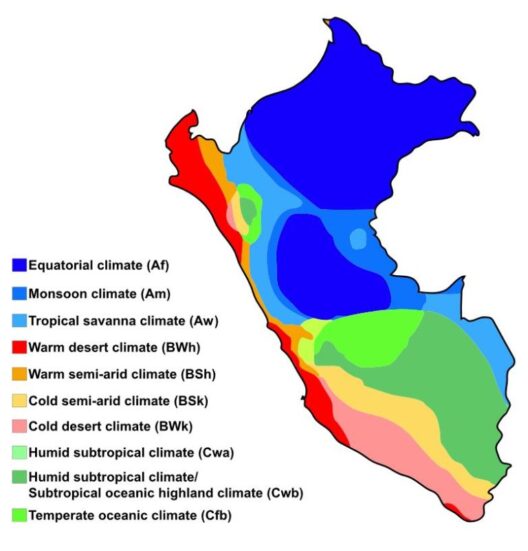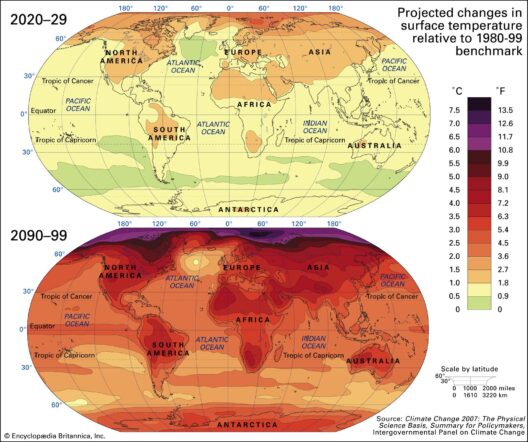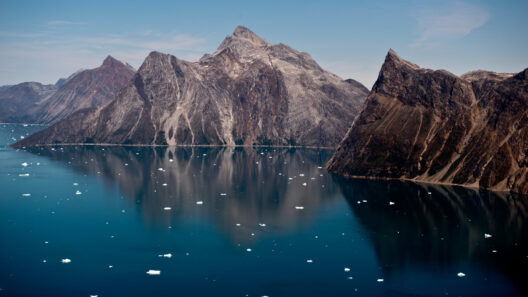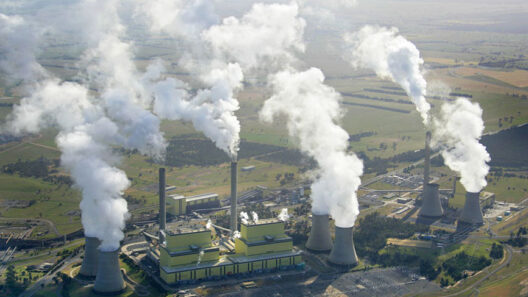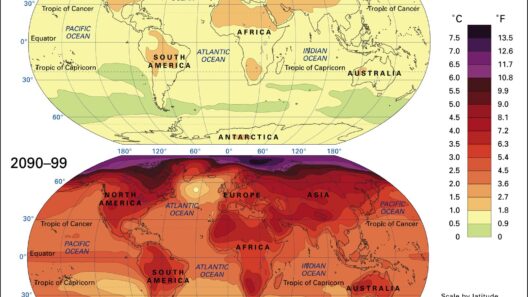The Great Lakes, a magnificent network of freshwater bodies, may evoke images of serene waters and thriving ecosystems. However, a looming question arises: Are the Great Lakes overflowing due to global warming? This query, both playful and serious, invites scrutiny as we delve deeper into the intricate relationship between climate change and hydrological dynamics in one of the most expansive freshwater systems in the world.
To comprehend this enigma, it is essential to establish a baseline understanding of the Great Lakes themselves. Encompassing Lake Superior, Lake Michigan, Lake Huron, Lake Erie, and Lake Ontario, this intricate assembly of lakes stretches across portions of Canada and the United States. These lakes not only serve as a vital source of drinking water for millions but also support a diverse array of wildlife and recreational opportunities. However, their health and stability are increasingly threatened by climatic shifts.
Over the past century, dramatic alterations in precipitation patterns, temperature fluctuations, and evaporation rates have become apparent. Scientific data suggest that as global temperatures rise, the hydrological cycles in the Great Lakes region are being drastically altered. Warmer air temperatures increase evaporation rates from the lake surfaces, while simultaneously enhancing the moisture-holding capacity of the atmosphere. What does this mean for the Great Lakes? A paradoxical situation emerges where increased evaporation is juxtaposed with heightened precipitation, a duality that is characteristic of a changing climate.
The ramifications of these shifts can be profound and complex. In recent years, certain lakes have exhibited signs of both significant swelling and diminishing levels. In some seasons, heavy rainfall has led to unprecedented water levels, flooding adjoining shorelines and causing erosion that threatens habitats and human infrastructures. Conversely, periods of drought can lead to sharply reduced water levels, exposing once-submerged landscapes and altering the delicate balance of the ecosystem. Thus, the question of overflowing is more nuanced than it initially appears.
What precisely drives the water levels in the Great Lakes to oscillate so dramatically? One may consider the effects of climate variability—an interplay of long-term trends that contribute to erratic weather patterns. The frequency of extreme weather events has escalated, with some years marked by deluges leading to high-water levels while others are characterized by scarcity. How do we make sense of this erratic behavior? The answer lies within the broader context of anthropogenic influences and natural variability intertwined.
Furthermore, the ecological consequences of fluctuating lake levels cannot be overstated. The introduction of invasive species, shifts in native flora and fauna, and the degradation of water quality serve as stark reminders of the consequences of climate-induced changes. The longer the Great Lakes grapple with the effects of global warming, the greater the threat to the biodiversity and ecological stability that many species depend upon. This begs a pensive query: can we reverse or mitigate these consequences effectively?
Addressing the question of whether the Great Lakes are overflowing due to global warming necessitates a thorough examination of regional responses to these climatic shifts. For instance, municipalities along the shores have explored infrastructure adaptations, such as improved drainage systems and flood barriers, to mitigate the effects of rising water levels. There is a playful irony in the necessity of building barriers against nature after centuries of efforts to harness its power. Yet, it illustrates humanity’s resilience in the face of climatic adversities.
Additionally, the interplay between land usage and lake health cannot be ignored. Urban sprawl, agricultural runoff, and industrial pollution continue to challenge the natural purification processes of the lakes. As development encroaches on sensitive ecosystems, the impacts of climate change can be exacerbated, leading to ‘overflowing’ not just in terms of water levels but also in pollution levels that pose a risk to human health and aquatic life. Herein lies another pivotal consideration: how do we strike a balance between progress and preservation?
This narrative of high water levels, degrading ecosystems, and community responses presents a conundrum—one that requires a concerted effort from individuals, governmental bodies, and international coalitions. Collective stewardship of the Great Lakes is paramount to ensuring that these vital resources endure for generations to come. Innovative approaches to sustainable development, responsible water management practices, and rigorous environmental policies must be embraced wholeheartedly.
In conclusion, while the notion of the Great Lakes overflowing conjures a vivid image of nature’s fierce power, the reality is much more complex. Global warming is intricately linked with shifts in water levels, introducing risks while also prompting necessary challenges. It forces critical questions upon society—how do we reconcile human encroachment on nature with the imperative for conservation? Are we prepared to act decisively and cooperatively to tackle the myriad issues facing these precious water bodies? The answers to these questions may very well dictate the future of the Great Lakes and the broader ecological balance they represent.
As we ponder the potential challenges posed by climate change, we must recognize that the health of the Great Lakes embodies the interconnectedness of our global ecosystem. The choices we make today will resonate far beyond our immediate shores, shaping the future not only of these lakes but of our planet as a whole. Let us advocate, educate, and innovate to secure a more sustainable tomorrow within this precious aquatic treasure.



